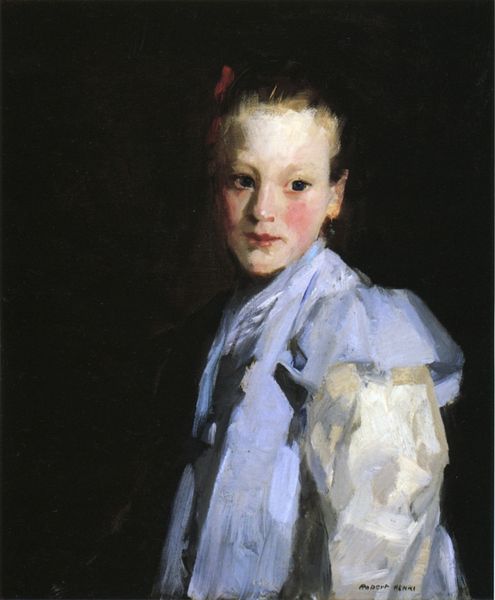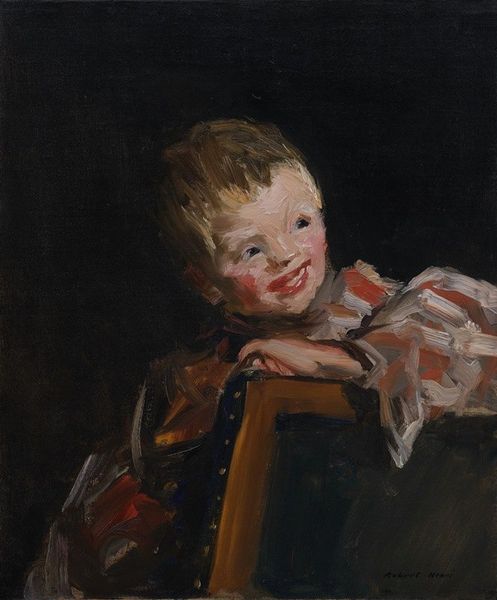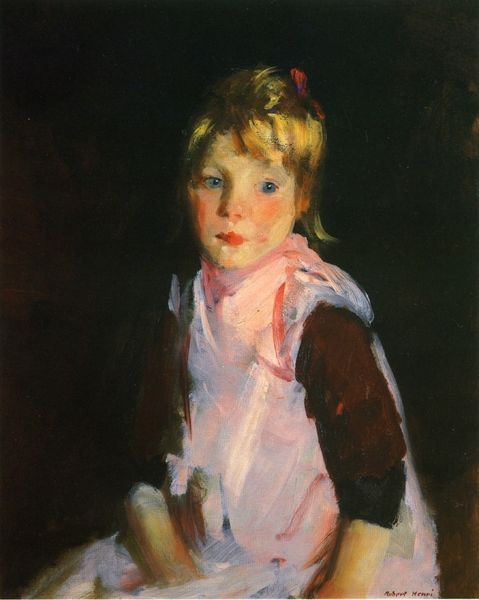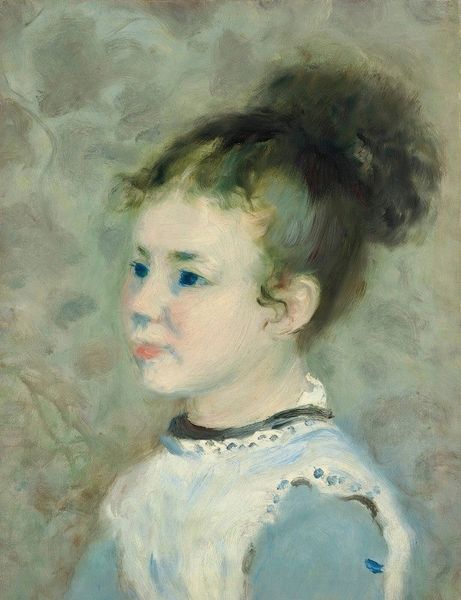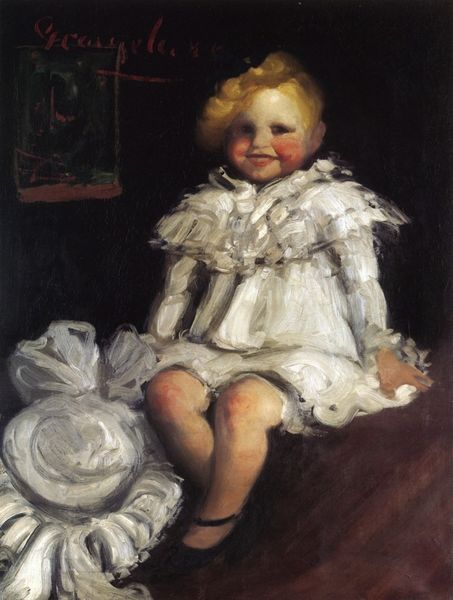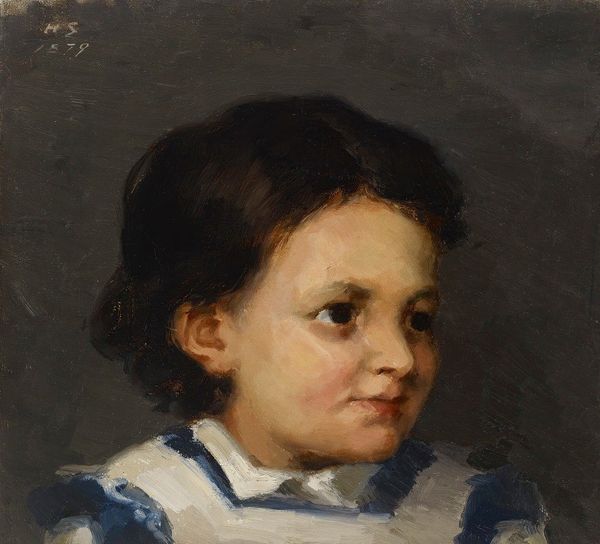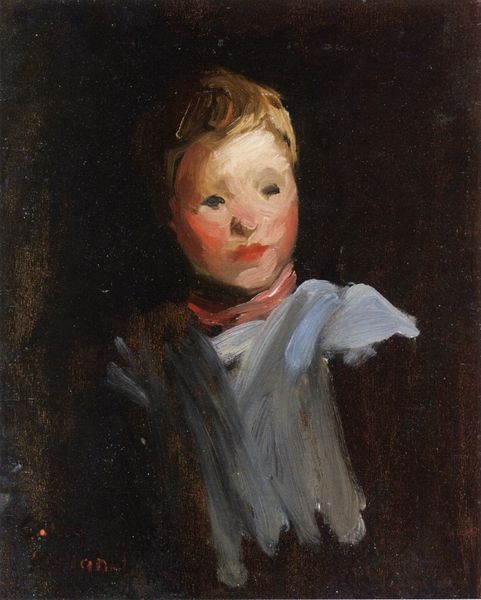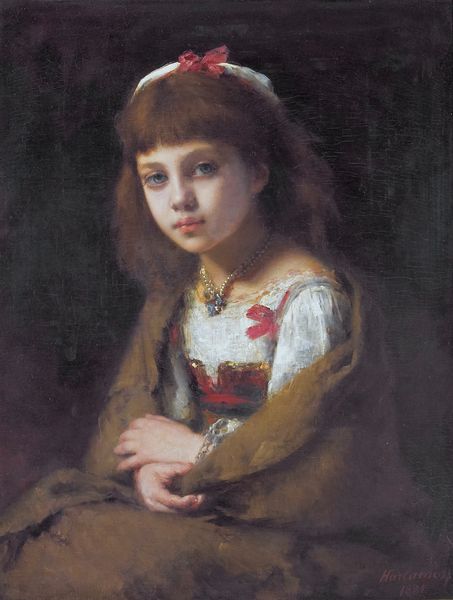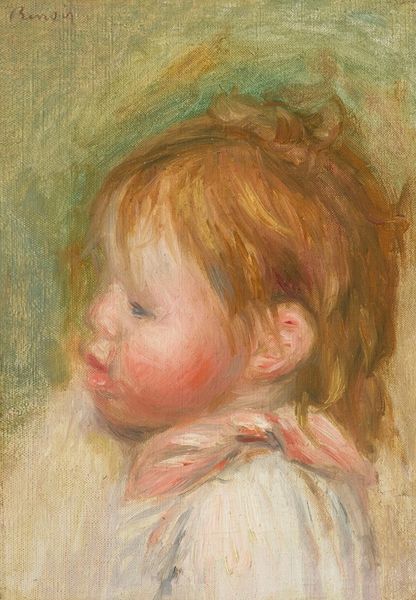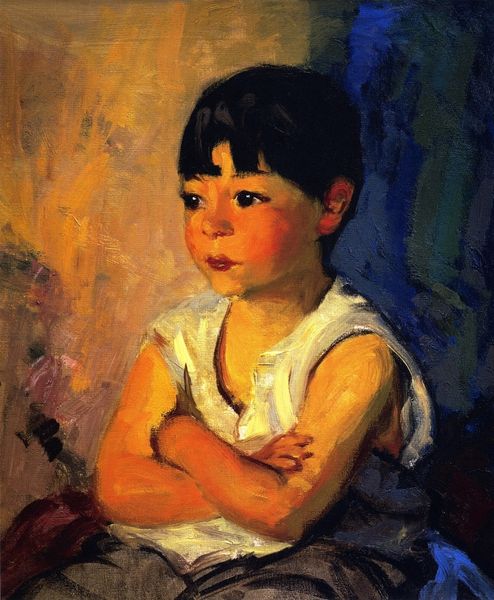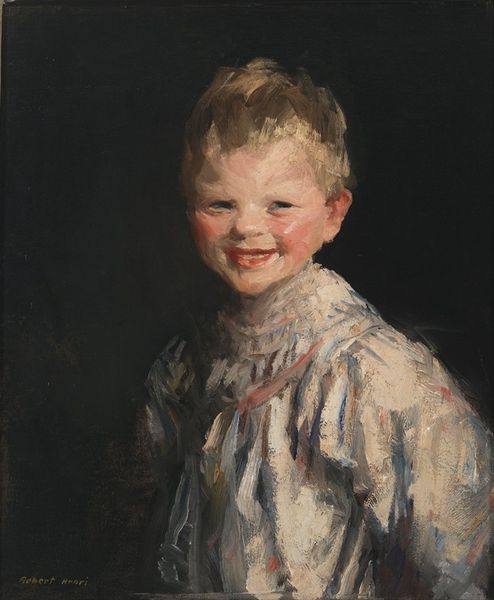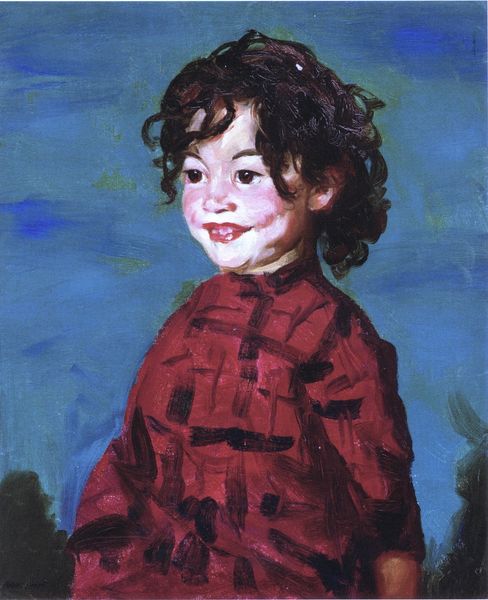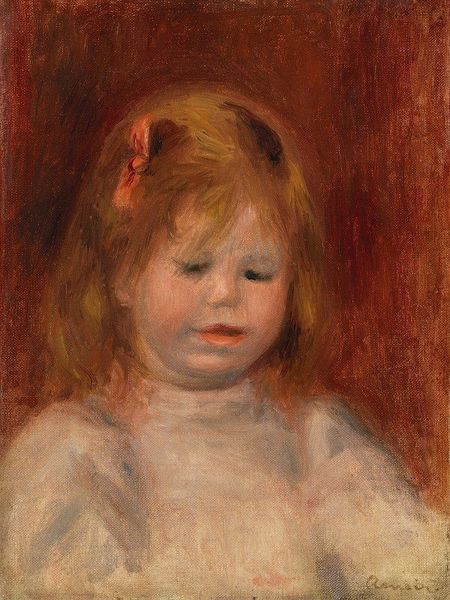
painting, oil-paint, impasto
#
portrait
#
painting
#
oil-paint
#
impasto
#
portrait reference
#
portrait head and shoulder
#
animal portrait
#
ashcan-school
#
animal drawing portrait
#
portrait drawing
#
facial study
#
facial portrait
#
portrait art
#
modernism
#
fine art portrait
#
digital portrait
Copyright: Public domain
Curator: We are looking at Robert Henri's 1910 oil on canvas painting, "The Red Top." Editor: It strikes me as unusually intimate, almost confrontational. The dark, close background really pushes the figure forward. Curator: Henri was a leading figure in the Ashcan School. His focus was often on capturing everyday life. The visible brushstrokes and impasto give it an immediacy, wouldn't you agree? There's a real emphasis on the physicality of the paint. Editor: Precisely, and in that period, a portrait of a young person— note the crossed arms, perhaps a symbol of guardedness, of budding self-awareness—moves beyond a mere visual record. It’s a document of societal roles, expectations, especially around children growing into maturity. Curator: Note how the red in the scarf and hair provide the focal point. Henri seems particularly interested in contrasting textures - the smoothness of the face against the rougher scarf. I’d suggest this focus on materiality, the actual stuff of the world, distinguishes Ashcan artists. Editor: I think, beyond just materials, we should think about childhood itself as constructed—note the formal composition conflicting with what we might expect from childhood representations. Who is this child becoming, and under what pressures? The painting feels very knowing about these forces. Curator: True. Thinking about materials specifically—the availability of tubes of pre-mixed paint at that time greatly impacted how quickly artists could work. It enabled this loose style. I mean, before that, grinding your own pigments was standard practice! Editor: Absolutely. And, beyond the shifts in artistic labor due to industrial innovations, those material shifts meant artworks became newly available for different groups in society, sparking new dialogues on art, selfhood, and belonging. Curator: It gives me a lot to consider about production itself. Editor: And it's more than just pigment on cloth; it’s a material manifestation of societal change as well as the historical narratives surrounding it.
Comments
No comments
Be the first to comment and join the conversation on the ultimate creative platform.
